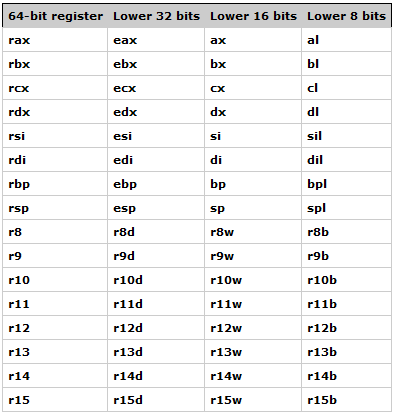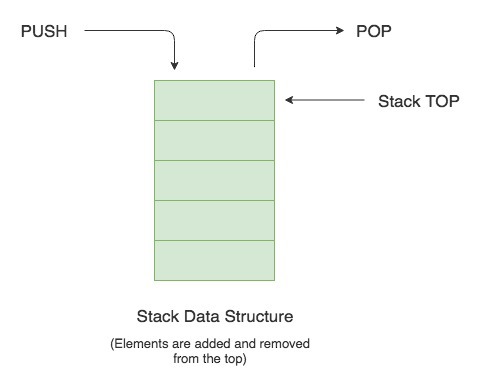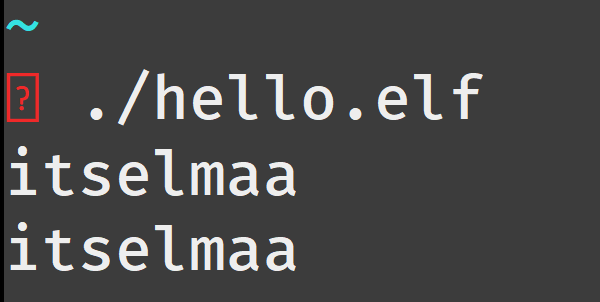How does Assembly work?
New concepts Covered
- Registers
- Stack
- Assembly Instructions
- Calling Conventions
Please watch this video on x86 Assembly, it’s really amazing.
Registers
A register is a location within the processor that is able to store data, much like RAM. Unlike RAM however, accesses to registers are effectively instantaneous.
There are actually 17 registers in an AMD64 architecture, aka 64 bit.
14 of which are general purpose registers:
rax, rbx, rcx, rdx, rdi, rsi, r8, r9, r10, r11, r12, r13, r14, r15
and 3 of which are reserved registers:
rbp, rsp, rip.
rbp : 64-Bit Base Pointer
rsp : 64-Bit Stack Pointer
rip : 64-Bit Instruction Pointer
We will cover rbp and rsp when we talk about the stack,
rip when we cover assembly instructions!
Some of the general purpose registers also have some specific functions, which we will also talk about later in the chapter.
Sizing Conventions
Registers with prefix r- often has a size of 64-bits for 64-Bit binaries.
However, such registers can have different sized accesses for backwards compatibility.
For example, the rax is the full 64-bits register, the eax is the low 32-bits of the rax register, ax is the low 16-bits, al is the low 8-bits and ah is the high 8-bits of ax.


The Stack
As convenient as registers are, they are insufficient in holding large-data.
Then the question is, where are our data and variables stored at???
Stack.
In x86, the stack is simply an area in RAM that was chosen to be the stack - there is no special hardware to store stack contents. The esp/rsp register holds the address in memory where the bottom of the stack resides.
Think of the stack as a tower:

When we want to add a new block, we add it on top, and when we want to remove a block, we remove from the top. if you remove from the bottom the whole tower will topple!!
This is exactly same as the stack.
When we add a block on top, we use a push instruction.
When we remove a block from the top, we use a pop instruction.

In our stack, these blocks holds a size based on the data it stores.
i.e. if we declare a variable name[10], a block size 10 will be pushed onto the stack.
Assembly Instructions
If you have not watched this x86 Assembly video yet, please do go watch now.
An assembly language is a low-level programming language designed for a specific type of processor.
If you are compiling a C program, it is compiled from C to assembly code which can then be interpreted by the machine.
However, we could also write assembly directly. However, how do we call functions that read and write without our LIBC functions?
This is where syscall comes in.
A system call is a request made by a program to the operating system. It allows an application to access functions and commands from the operating system’s API.
Syscall takes in a few arguments from specific registers, and executes it.
Look at this syscall table which shows the types of functions available and the arguments taken in.
Consider the following program which is written in assembly, which we will try to interpret.
.global _start
_start:
.intel_syntax noprefix
push rbp
mov rbp, rsp
sub rsp, 50
mov rax, 0
mov rdi, 0
mov rsi, rsp
mov rdx, 10
syscall
mov rax, 1
mov rdi, 1
mov rsi, rsp
mov rdx, 10
syscall
mov rax, 60
mov rdi, 0
syscall
.global _start
_start:
.intel_syntax noprefix
This chunk just initializes the assembly code so that it can be compiled.
push rbp
mov rbp, rsp
sub rsp, 50
This sets the base pointer, moves the stack pointer to it, and subtract stack pointer by 50.
Now we have a stack of 50 bytes, with rbp and rsp denominating the 2 ends.
mov rax, 0
mov rdi, 0
mov rsi, rsp
mov rdx, 10
syscall
This sets the following registers:
rax: 0 system call index (read)
rdi: 0 file descriptor (0=input, 1=output, 2=error)
rsi: rsp buffer (aka location of input/output)
rdx: 10 count (aka size of input/output)
If we refer to our syscall table, we see the significance of each register as shown above.
We can see that the syscall reads an input of size 10 at our stack pointer.
This means our input will be on the stack.
mov rax, 1
mov rdi, 1
mov rsi, rsp
mov rdx, 10
syscall
This sets the following registers:
rax: 1 system call index (write)
rdi: 1 file descriptor (0=input, 1=output, 2=error)
rsi: rsp buffer (aka location of input/output)
rdx: 10 count (aka size of input/output)
In this chunk, we can see that our syscall write to our output 10 bytes of whatever is at RSP.
In short, the program runs read(STDIN, rsp, 10)
Hence, putting all the pieces together, we see that it echoes our input!
Compile with gcc -nostdlib -static <asm file name>

Calling Conventions
Now we have seen how assembly instructions work with syscall, what about assembly instructions after being compiled from a C program?
Consider the same C program we wrote in the previous How does C Programming work tutorial.
#include <stdio.h>
int main() {
char name[10];
int somevalue = 10;
puts("What is your name?");
scanf("%10s", &name);
printf("Hello %s", &name);
return somevalue;
}
How does assembly parse arguments into functions such as scanf?
Well, for 64-bit binaries, function arguments are first passed in certain registers:
RDIRSIRDXRCXR8R9
then any leftover arguments are taken from the stack.
Hence, %10s will be parsed into RDI, and &name will be parsed into RSI.
As the function ends, it attempts to return somevalue to the caller function.
This return value goes into rax.
comments powered by Disqus